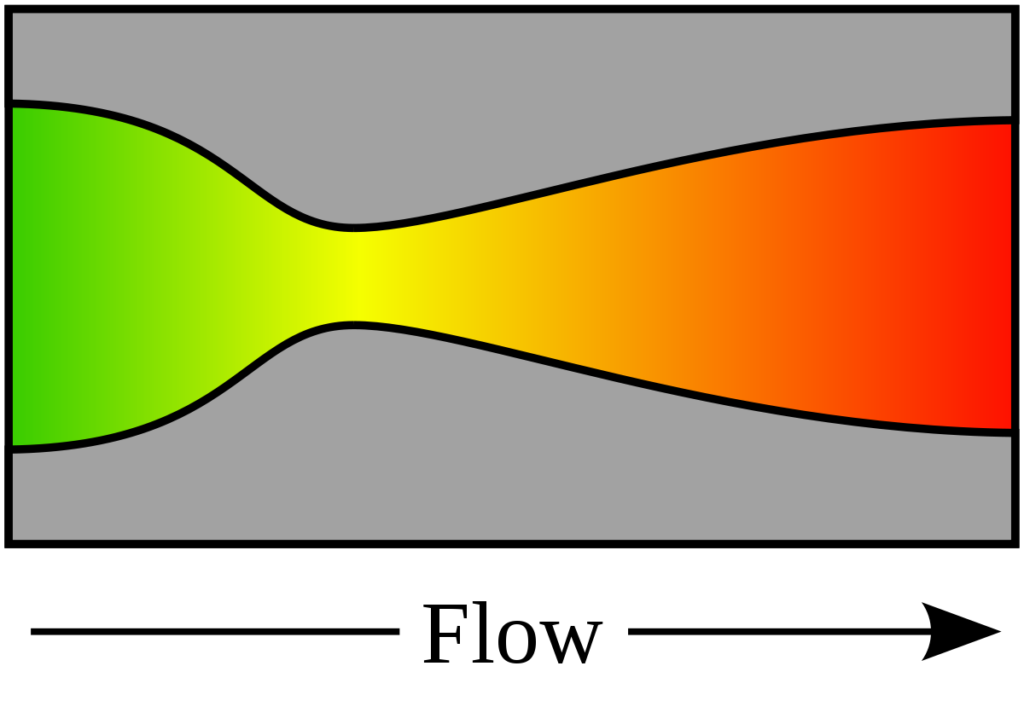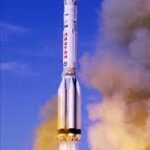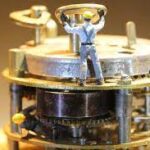This article contains a technical description of how thrust augmentation nozzles increase the performance of rocket thrusters and solve the problem of rocket engines needing to work as efficiently in near-space conditions as they do near sea level for liftoff.
Rocket thrusters are faced with a difficult problem. They must generate a massive amount of thrust during liftoff, which occurs at atmospheric pressure. However, for much of their operating time, the thrusters operate in near-vacuum conditions. Designing for these differing operating conditions constrains engineers, who must balance different tradeoffs to ensure optimal performance. A new development called the thrust augmentation nozzle, or TAN, promises to greatly improve thruster performance at both liftoff and high altitudes. This concept works on similar principles to the jet afterburner.
The Problem
At liftoff the rocket is at its heaviest, as no fuel has yet been burnt. To overcome this large mass, the rocket thrusters must generate an enormous amount of thrust early on. Later, however, they must still generate a high specific impulse (Isp) in vacuum. An impulse is the integral of force over time; it acts to increase the momentum of an object. To maximize specific impulse, the ratio of the nozzle exit area to that of the nozzle throat (nozzle area ratio) must be as large as possible. Ideally, the combustion gases exit at ambient pressure. This is impossible in vacuum (or near vacuum), rather, nozzle area ratio is maximized. However, a large nozzle area ratio will not expel exhaust gases at atmospheric pressure.

This creates a problem at sea level, however. Large nozzle area ratios reduce engine efficiency at sea level. This reduction in efficiency occurs because the gas in the outermost areas around the nozzle expands to the point that its pressure is lower than atmospheric pressure, which generates negative thrust. When the nozzle area ratio reaches very large values, the exhaust gas flow separates from the nozzle and can cause damage.
Image: Wikimedia Commons – Jupiter S3 Rocket Engine
Note the large nozzle area ratio.
How Thrust Augmentation Nozzles Work
In a rocket thruster with thrust augmentation nozzles, an annular ring of nozzles are installed below the nozzle throat at the nozzle’s divergent segment. The propellant and oxidizer are injected at the precisely required amounts; atmospheric oxygen is not used. Using TAN’s allows engineers to create a booster with a very high nozzle area ratio. The effect of the TAN is to prevent flow separation, even with high ratios. The TAN’s provide additional thrust in two ways: first, by creating an extra gas flow; and second, by lowering the area available for primary exhaust gases to expand.
Advantages of Thrust Augmentation Nozzles
Though thrust adjustment nozzles are not yet in widespread use, their applicability is more than just theoretical. Tests have revealed the practicality of their use: a rocket thruster with TAN’s was shown to have 30% thrust without a concurrent decrease in engine efficiency during a test by Aerojet. The next generation of rocket thrusters used by NASA and other programs are likely to make use of thrust adjustment nozzles.


